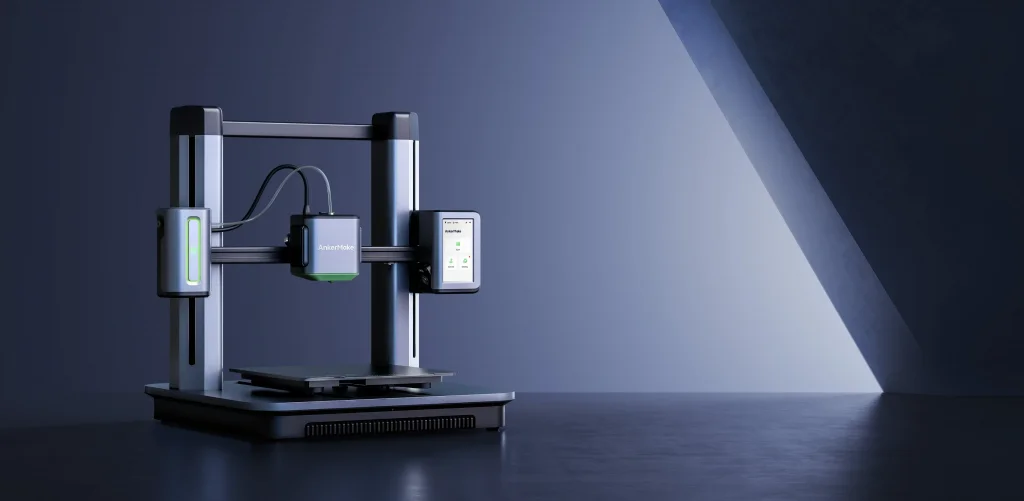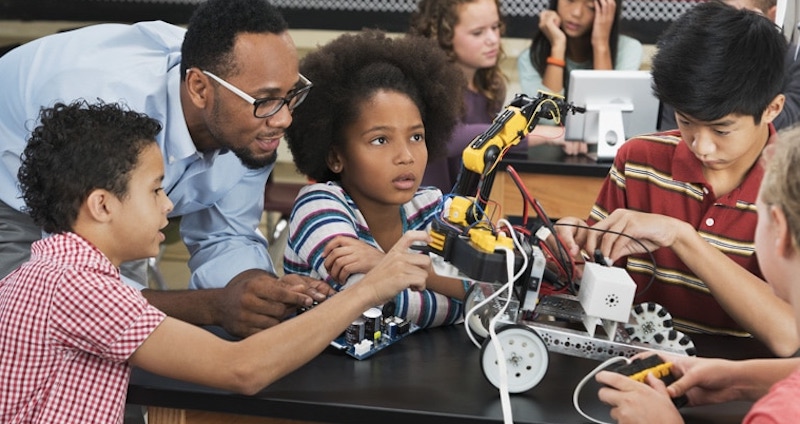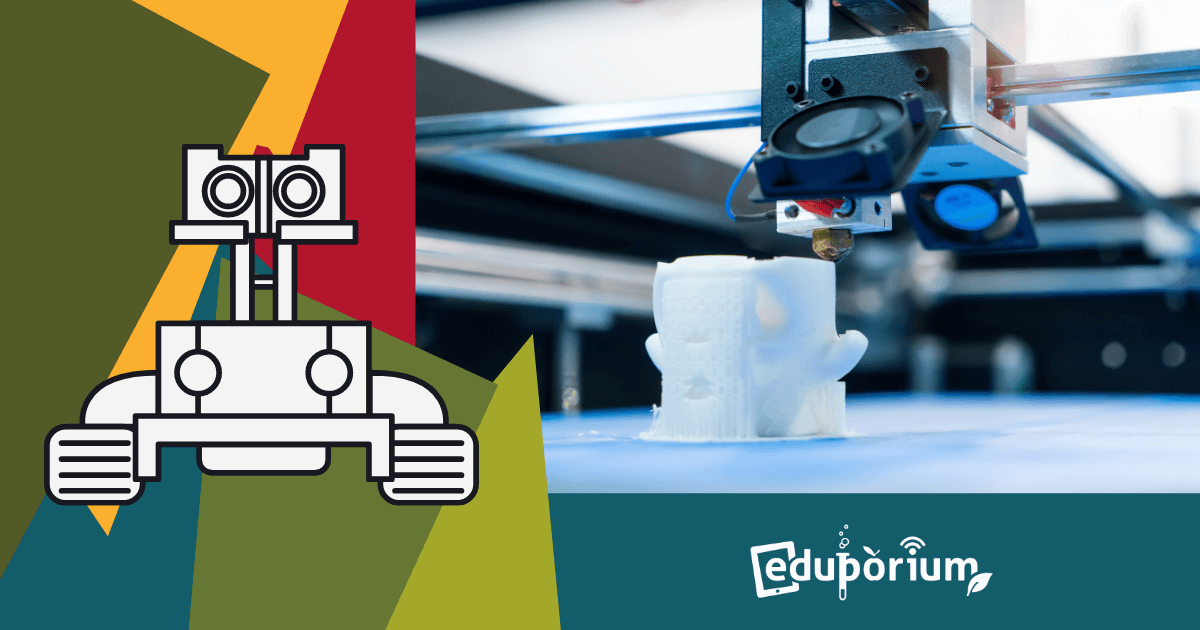There are so many STEM tools that teachers can use to make instruction more effective and learning more engaging. With options that'll help highlight coding, engineering, robotics, 3D printing, or something else, there's truly a lot to choose from. For us, however, just because a STEM tool has an element of technology and it's intended for educational use, this doesn't necessarily translate to deeper learning experiences. As EdTech tools evolve, their defining characteristics are often changing as well and, as we move further into the 21st century with a better understanding of preparing kids for the future, those features are improving. This week, we’re breaking down some of the best things to look for in an educational technology!
Accessibility
One of the top features educators should be looking for in technology tools today is accessibility. Not only are EdTech manufacturers now intentionally designing products with this feature, the benefits they provide are extensive. Starting with teachers, greater accessibility means they can do much more with a particular piece of technology or they can use it in so many different ways as well as with so many different types of students. When we think of accessibility, we think of versatility. And, since students learn in different ways, the more accessible an EdTech tool is, the more valuable it is. It's more and more common that classroom technologies have learner-centered features and accessibility is firmly on that list.
One way to know if a piece of educational technology is accessible is simply by looking at it. If it looks like it has any extra, complicated components or a slew of unnecessary bells and whistles that look like they're only there for show, then it might not be the best move. The features of a technology tool should add to the learning experience and never present any sort of distraction for the children who are using them. Teachers should also note whether or not every student in their class will be able to use the tool fully. Some students might struggle to grip it or handle small components while others might not like blinking lights, for example. Just because a STEM tool is affordable does not necessarily mean it's right for all students.
What makes an EdTech tool accessible is often the kinds of projects kids can do with it and those learning experiences they can create. If creators of particular products also provide easy-to-follow activities that are educational and simple to implement, that's a plus, too. Plus, if educators can start utilizing the technology without much of a learning curve, that also makes it accessible. Finally, the accessibility features also shine when all children can share the technology tool among themselves seamlessly. It might seem fairly obvious to you, but not every EdTech tool is completely accessible. When researching new classroom technologies, keep these characteristics in mind to determine if what you're looking at offers enough accessibility.
Portability
Learning happens everywhere in today’s schools and we really do mean everywhere. Because technology plays such a large part in that learning, teachers tend to find amazing benefits in educational technologies that are portable. Being able to enhance their instruction no matter where they are teaching is a huge plus. Since today’s educators deliver instruction in a lot of different places, like a classroom, library, makerspace, or even outside on occasion, having technology that they can move from place to place is super beneficial. For those who think about laptops or tablets when thinking about EdTech, you might say these devices are already portable. When working with bigger classes, however, it can be challenging to get all your tech and students where they're needed. If this is an issue you've commonly faced, selecting technologies based on its portability might be helpful.
In addition to the computing hardware, top STEM tools available today are also widely portable. So much powerful technology can pack into these little devices to allow children to use them in many environments. And, any EdTech tools with a higher degree of portability can provide even greater value across education. Take robotics tools, for example. There are plenty of them that are very small and very easily transported. So, if you were thinking that educational robotics lessons require finding a way to get some big machines into your classroom, that’s not always the case. They’re all pretty small (and getting smaller), which allows teachers to distribute them to more students and for their students to learn with them anywhere. The size factor comes into play for other tools, too, like VR kits, circuitry sets, and 3D printers for education.
Speaking of 3D printing, this is one area of EdTech that is probably more portable than you'd think. When they first popped up in classrooms, 3D printers were big machines that took up quite a bit of space. While some of them still are pretty large, others are getting increasingly smaller. In fact, the smaller models allow educators to easily move the printers so they can use them in the library one day and in the makerspace the next. And, with the smaller sizes of 3D printers also comes a price decrease in a lot of cases, so that’s something to also keep in mind for anybody who’s on the fence about getting one. Plus, the availability of 3D printing pens offers another avenue for both STEM creation and portability. Check out the selection of STEM tools on our store and you’ll be sure to find plenty that are portable!

Collaborative
If you think about it, so much of the real world and the careers that have been born into it have been built on collaboration. It’s rare in our day and age to find professions—especially in the STEM fields—in which employees are working independently a majority of the time. STEM careers require constant collaboration and teamwork because each person can often bring some type of specialization to the table. Since that is the case, students can gain many benefits from collaborative approaches to hands-on learning throughout their K-12 years. Because technology also plays a big part in the modern workforce, EdTech solutions that foster a sense of collaboration and allow for fluid group learning tend to work great in many classrooms.
Opportunities for collaboration are made that much more possible with technology in many cases. A lot of the time, that collaboration provides multiple academic or intellectual benefits among children. For starters, using EdTech tools might simply get children talking to one another. As they work with a certain technology and see some of the things it can do as well as what they can do with it, they’re more likely to try bouncing additional ideas off each other about how they could use it to solve problems or enhance solutions. Digital tools and hands-on STEM tools have a distinct purpose and provide some distinct advantages for building collaborative environments. That includes helping students develop collaboration skills and one reason for this is simply that they help get students communicating.
While the hands-on STEM tools, like robotics sets and engineering kits, are good for building collaboration skills, there are others. Students can also benefit a great deal from collaborative digital tools, which can be found on or offline. Instructors can post class-wide discussion topics and kids can have thought-provoking conversations whether they’re in the same locations or not. This is, of course, comparable to the real world in which children today might be expected to collaborate with others located in different parts of the world. Getting as much experience as possible with collaboration will only help prepare them for that kind of a life. And, as such, digital and physical EdTech tools can each help them experience what it’s like.
Progressing
This is always one of our favorite features in an EdTech tool. Sure, just about every EdTech solution is great and can allow students to prepare for the future. Some technologies, however, will offer just a little bit more than that. Manufacturers can pack so many capabilities into the technologies they produce today, so those tools can help kids to learn multiple things—and continue learning more complex concepts after mastering key basics. Take coding, for example. One of the most popular ways to introduce kids to coding is through the use of graphical and visual blocks. This kind of programming is referred to as block coding or a Blockly language and allows students to simply drag some different blocks with specific values into their programs and then use that program to control something.
For an EdTech tool, when we say it has ‘progressing’ features, we mean that it allows students to progress by learning concepts with increasing complexity. This starts with introducing children to the simplest forms of a concept; for coding, that would be block coding. So, then, using the skills they’ve learned throughout the process, kids progress to the next most complex step in the equation—perhaps an addition of loops or variables. The final steps in the progression could be the introduction of typed coding using a language like JavaScript or Python. Being able to utilize the same piece of technology to teach different skills with varied complexity makes that technology valuable in our eyes. It also appeals to teachers since they don’t have to spend money on something new when students master a skill.
In terms of progress, EdTech tools specifically for young children allow them to learn to use particular tools more extensively. Then, beyond that, it even helps children build a stronger foundation for using all sorts of different technologies for learning. Building tech skills is something that takes a little bit of time, but, thanks to modern EdTech designs, once they have a basic understanding of how the technology works, kids could typically make an easy transition to using it more extensively. For educators, finding technologies that allow children to develop more extensive skill sets while using it to explore increasingly complex concepts is truly a win-win. And, then they can also get a lot more mileage out of their purchase.

Fun
We could sit back and share how we truly believe EdTech tools should do more to increase engagement for students. At this point, however, we think that should probably go without saying. So, the fifth and final trait we look for in technologies is how much fun they'll help kids have. Since children tend to be more engaged when they’re having fun anyways, this too seems like a win-win. There is no reason that significant learning can’t happen when students are having fun and many technologies allow for both. Since, most of the time, kids are excited to use new technology, why not choose solutions that unlock added fun?
Educational technologies shouldn’t only create fun for your students, though. They can absolutely create some more fun for teachers, too. In an obvious sense, EdTech can make the teaching experience more fun. It can also, however, help make it more practical and efficient in some cases, which helps to make teaching more fun or even afford teachers with more free time to have fun. Since many technologies allow educators to provide real-time feedback to their students, this can create a more enjoyable teaching experience. Plus, the possibilities for lesson planning and in-class activities expand greatly, making the time teachers spend preparing slightly more fun.
And, EdTech can even allow educators to collaborate in the same ways it makes it possible for kids. When introduced to any new tech tool, teachers can work with their peers to teach and learn together. This helps them better understand simple things, like turning it on and off, and how to use it in instruction. Plus, many EdTech professional development sessions are more fun than the traditional PD teachers will tend to take part in. If you’re using a technology because you believe it should be good for students but it’s not creating deeper learning, collaboration opportunities, or fun, then it might not be the right one. If you'd like to ask us any questions about what you should be using, please get in touch with us!
For the latest EdTech, STEM, and 21st century education news, follow us on Twitter and Instagram. Like us on Facebook, too, or sign up for our newsletter for our latest product announcements and offerings. If you have an idea for an Eduporium Weekly theme, send us a message on social media or comment below.



